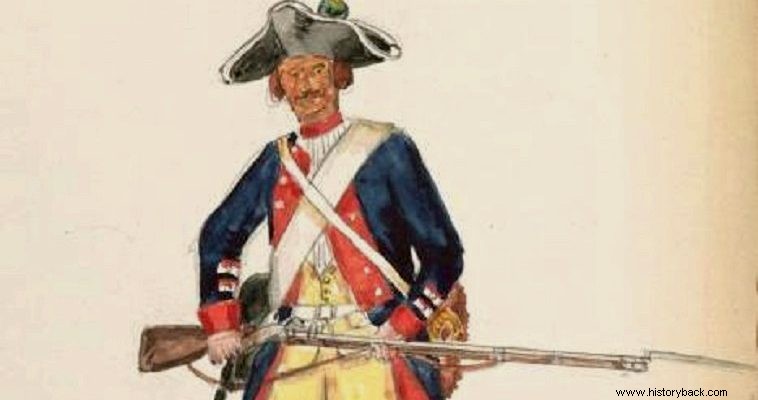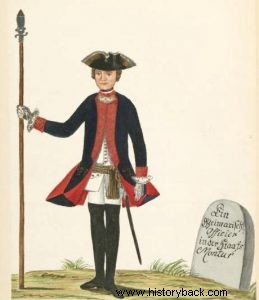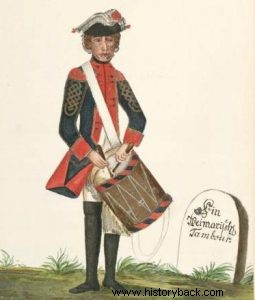
The Holy Roman Empire of the German Nation was one of the oldest European institutions when the Seven Years War broke out in 1756. The forces of the Empire comprised of the military units of the small German states and states in this case sided with of Austria and against Frederick the Great's Prussia.
The Imperial Army, known as the Reich Army, had written pages of glory in the 17th and 18th centuries. Especially he fought exceptionally against the Turks in the campaigns of the great general Eugene of Savoy and against the French in the War of the Spanish Succession (1701-1715).
But then the Reich troops were allowed to decline. Thus, at the outbreak of the Seven Years' War, the imperial units were, in general, not ready for war, having shortages in armaments, equipment, and even clothing.
The army was formed by "circles" that were defined based on geographical areas of Germany. The Circle of Upper Saxony had a heavy military tradition of centuries. When the Prussians invaded Saxony, the forces of Upper Saxony should, in theory, number 3,500 men.
However, this did not happen. In the spring of 1757 Austria ordered the formation of regional forces. In March 1758 the Principality of Saxe-Weimar Eisenbach agreed to raise a battalion of 665 men to serve against the Prussians. The remaining states of the Circle decided to form a second battalion. Thus a regiment was formed which was called the Infantry Regiment of the Saxon States .
The regiment was composed as follows:
– Staff
– 1st Battalion
Four musketeer companies, one grenadier company from the state of Saxony Weimar Eisenbach (665 men)
– 2nd Battalion
2 companies from the state of Saxe-Gotha Altenburg (312 men)
1 company from the state of Saxe-Coburg Meiningen (104 men)
1 company from the state of Saxe-Coburg Saafeld (84 men)
1 company from the state of Saxony Hildburghausen (114 men)
The regimental commander was Colonel von Lassberg.
The first battalion was placed under Lt. Col. von Riedenzel. The Regiment extended a total of 1,228 men and joined the rest of the Reich Army, 36 battalions and 28 companies strong, at Chemnitz, joining Lieutenant General von Kleefeld's division.
In 1759 the regiment took part in operations in Saxony and Franconia and took part in the siege and recapture of Dresden by the Prussians. On September 8, 1759, the regiment took part in the Battle of Sinai, in the Prussian effort to lift the siege of Dresden.
However, they did not succeed and retreated. On September 29, 1760 the regiment took part in the first battle of Torgau. He undertook guard duties on several occasions and took part in the campaign of 1762. The end of the war found him in Bamberg.
The men wore the standard equipment of the time. They wore a black three-cornered hat. The grenadiers wore a matrix hat similar to the Prussian grenadiers. The tunics were dark blue, like the Prussians, with the exception of those of the companies from the states of Saxe-Coburg and Saxe-Gotha-Altenburg which were white like the Austrians.
The officers carried a sword and a scimitar. Non-commissioned officers carried a slightly curved sword and also a scimitar. Soldiers carried flintlock muskets, swords and bayonets. They also carried a leather holster and a cartridge case with a capacity of 60 cartridges.

Musketeer of the regiment.

Regimental officer.

Drummer of the regiment.
